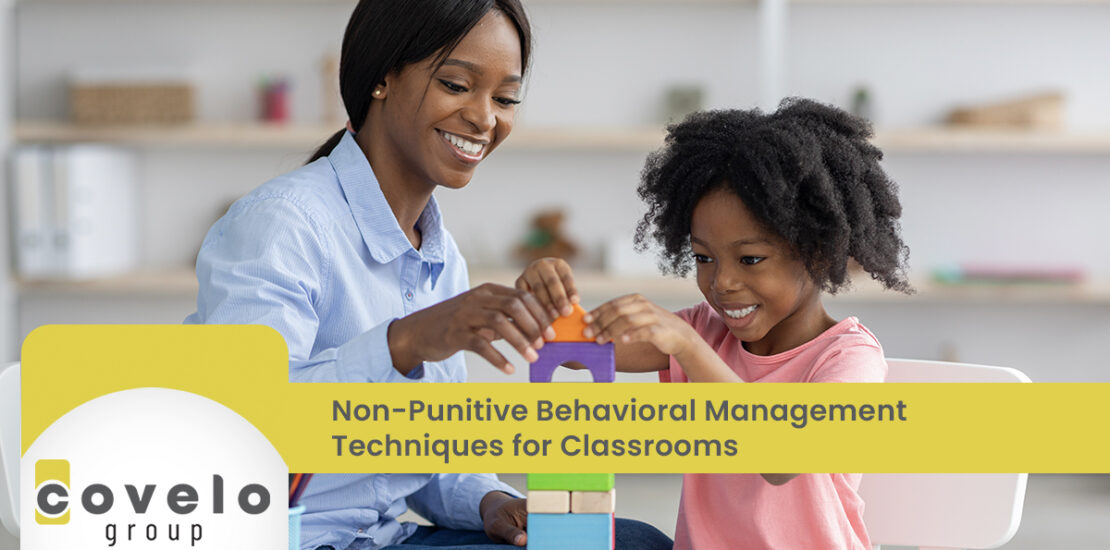- June 5, 2024
- Posted by: Covelo Group
- Category: Educational Services

Throughout history, teachers and administrators have punished students who broke the rules or otherwise disrupted themselves and/or others from learning in a safe, happy, and productive environment.
In many cases, this has resulted in detention, suspension, or students otherwise being removed from that learning environment. In short, this behavioral management technique is known as punitive discipline. From it, affected students have learned that if they make a mistake, they must isolate themselves from their community, their peers, their resources, and their role models.
A Dangerous Cycle
Of course, educators cannot allow severe disruption, chaos, or other circumstances that may compromise successful learning or, even worse, threaten the safety of others. However, punitive discipline has increasingly proven ineffective as it results in students experiencing reduced learning time, disengagement from school, compromised trust with their teachers, and broken connections to their educational community.
- The U.S. Government Accountability Office (GAO) has found that even a single suspension doubles a student’s risk of dropping out.
Restorative Justice: A Better Option
An increasing number of schools and districts are turning to restorative justice as an alternative to punitive discipline for behavioral management. This theory focuses on mediation and agreement rather than punishment. It helps resolve conflicts by finding and addressing their root causes to mend harm caused by students’ negative behavior.
- Restorative justice naturally aligns with inclusion, as it has been used successfully by indigenous people like the Maori for generations.
- The Oakland Unified School District (OUSD) in California began using restorative justice in 2006. Within three years, the district’s pilot middle school saw an 87 percent drop in suspensions. By 2011, OUSD had made restorative justice its new model for handling disciplinary issues.
In essence, restorative justice builds classroom relationships rather than putting them at risk, strives for respect for everyone involved in conflict situations, and encourages all parties to take responsibility in addressing harms, needs, causes of conflicts, and obligations. Districts like OUSD take a three-tiered approach:
- Prevention: School years begin with teachers and students creating a mutual respect agreement where everyone is held accountable. When students help create the rules, they have a powerful sense of ownership. And if they break those rules, they can immediately be referred back to them.
- Intervention: Offending students are given the chance to meet with affected parties and a mediator, usually a teacher, to discuss what has happened and develop a corrective plan. In the process, invaluable relationships and trust are fostered.
- Reintegration: A “wraparound” supportive environment is provided for students who have been out of school and are returning from suspension, incarceration, or truancy. One such model is called Behavioral Leadership.
We’ll Help You Find a Role Supporting Students
There’s always more to learn when it comes to working in the educational services field. If a job in this field is right for you—or you would like to explore the possibility—the staffing team at Covelo Group can help. For roles including teachers, therapists, and other professionals, contact us today to learn more about using your skills in a supportive, inclusive environment and making a real difference in student healthcare.

